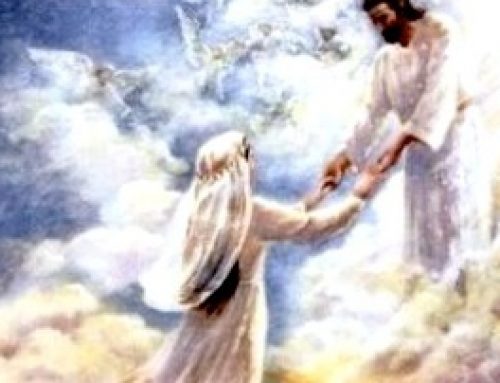After Jesus received water baptism and after He received the Holy Spirit, He said, "But I have a baptism to be baptized with, and how distressed I am till it is accomplished!" Luke 12:50 (NKJV). What baptism was this? It was the complete death of His will and His body. Hebrews 10:7, "Then I said, 'Behold, I have come–In the volume of the book it is written of Me–To do Your will, O God.' "
We follow in Jesus' death. Romans 6:3-5 (NKJV), "Or do you not know that as many of us as were baptized into Christ Jesus were baptized into His death? Therefore we were buried with Him through baptism into death, that just as Christ was raised from the dead by the glory of the Father, even so we also should walk in newness of life. For if we have been united together in the likeness of His death, certainly we also shall be in the likeness of His resurrection.”
Immersion into water is a symbol of our covenant unto death. Water baptism never imparted salvation. Yet, immersion was practiced in the New Testament. See Acts 8:12; 8:35-38; 10:44-48; 16:14-15; 16:33, 18:8; and 1 Corinthians 1:16. There are no scriptures which teach the symbol should cease.
We follow Jesus' example and are baptized with water. The Greek word baptizo signifies submergence, covering, burying, overwhelming. The whole procedure connected with one immersion backward into the water in the name of Christ is a most striking picture of a burial. The administrator in the symbol represents our Lord. As the candidate goes to him so in our hearts we go to the Lord for baptism. Confessing that we cannot of ourselves become dead to self and to the world, we give ourselves into the hands of the Lord, asking him to accept the will for the deed. We request that, our wills being given up, he will bury us into his death – that he will cause such experiences, disciplines, assistances and chastisements, as will best enable us to carry out our covenant of consecration. When the candidate has given up his will, the administrator gently lets him down into the water, and while he is thus on his back, helpless in the water, he furnishes a complete illustration of our powerlessness to assist ourselves while in death; and as the administrator raises him to his feet again we see in picture just what our Lord has promised us – to raise us up from the dead in due time by his own power.
For a more detailed study about salvation, see the booklet, "What Everyone Should Know About Being Saved," available as a free download at the following link:
" What Everyone Should Know About Being Saved"












